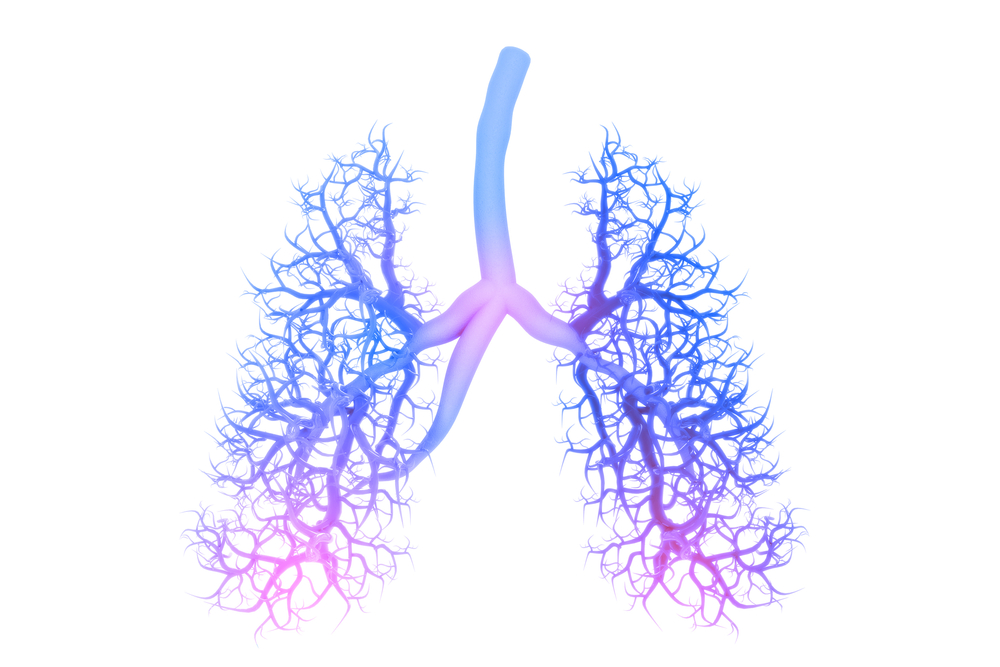Galectin‐10 Blood Levels Linked With Inflammation, Lung Remodeling in Study

Low levels of the galectin-10 protein (Gal-10) in scleroderma patients associate with inflammation and vascular changes in the lungs, leading to pulmonary arterial hypertension (PAH).
This finding, from a recent study, provides the first evidence that GAL-10 may play a role in scleroderma.
The study, “A potential contribution of decreased serum galectin‐10 levels to systemic inflammation and pulmonary vascular involvement in systemic sclerosis,” was published in the journal Experimental Dermatology.
Galectins are a subfamily of proteins involved in regulating numerous biological processes, including inflammation and blood vessel remodeling, both of which occur in scleroderma (also known as systemic sclerosis, SSc). Four galectins — galectin-1, galectin-3, galectin-7, and galectin-9 — have been investigated in scleroderma.
Gal-10 is mainly found in eosinophils, basophils, and regulatory T-cells (Tregs) — three types of immune cells involved in balancing the inflammatory response.
Tregs, for instance, regulate the workings of T-effector cells and suppress the production of inflammatory molecules. A subtype of eosinophils help to provide that check, limiting T-effector cells’ ability to proliferate by transferring Gal-10.
Based on these and other observations, researchers with the University of Tokyo’s Graduate School of Medicine explored relationships between Gal-10 levels in blood serum and scleroderma.
The investigators recruited 38 patients with diffuse cutaneous SSc (dcSSc), 30 with limited cutaneous SSc (lcSSc), and 20 healthy people as controls to their study.
Gal-10 levels in the blood were significantly lower in all SSc patients than in controls — a median of 20.3 nanograms (ng)/mL vs. 31.2 ng/mL. The effect was greatest in those with dcSSc. These patients averaged 19.3 ng/mL of Gal-10, compared with 23.9 ng/mL among people with lcSSc.
Because of the different degrees of skin fibrosis (scarring) involved in these two SSc subtypes, this suggests that lower levels of Gal-10 might associate with more severe skin sclerosis and the development of scleroderma.
“Consistently,” the researchers wrote, “we found a moderate, but significant correlation between serum Gal-10 levels and modified Rodnan total skin thickness score (mRSS) values in total SSc patients.” (mRSS scores measure skin thickness in scleroderma as a way of determining disease severity.)
They also found that low Gal-10 levels significantly associated with a lower percent diffusion lung capacity for carbon monoxide, which measures how well the lungs can transfer oxygen from their air sacs to the blood, and with higher right ventricular systolic pressure (RVSP), a measure of the pressure inside the artery that supplies blood to the lungs.
These findings suggested that lower Gal-10 levels are linked to the changes in pulmonary blood vessels that can lead to PAH.
Decreasing Gal-10 also corresponded to higher overall white blood cell counts — a measure of immune response — C-reactive protein (CRP) levels, and a faster erythrocyte sedimentation rate, the last two being measures of inflammation.
To the researchers, this indicated that lower Gal-10 levels correspond to an impaired ability to regulate inflammation.
In support of this potential association, SSc patients with joint pain, a symptom of active inflammation, had significantly lower Gal-10 levels than those without such pain.
Statistical analysis also independently linked CRP and RVS with low Gal-10, reinforcing the idea of a relationship to systemic inflammation and pulmonary vascular changes leading to PAH.
Future studies, the investigators said, should clarify this finding.
“This is the first report regarding the role of Gal-10 in SSc,” the researchers concluded. “The limitation of this study is the lack of data on the source of Gal-10, but we believe that these findings let us further understand the role of Gal-10 and its association with SSc.”






